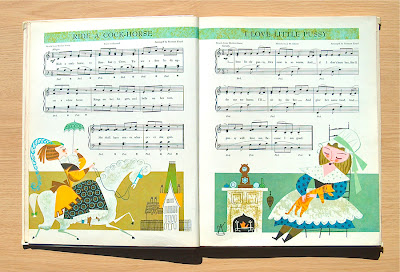Here's something I found recently about which, I have to admit, I know nothing at all.
This beautiful head and shoulders of a girl is made from that sort of chalky pottery that easily chips. She's about nine inches high and is very much in the 1950s style. There's an unreadable signature on the back with the wording Bust No. 4. I wonder if there are more in the same style?
I like the stylised, exaggerated shape and the curved lines. The colours work well too.
A mystery she may be but I'll have to make room to display her somewhere.


















































